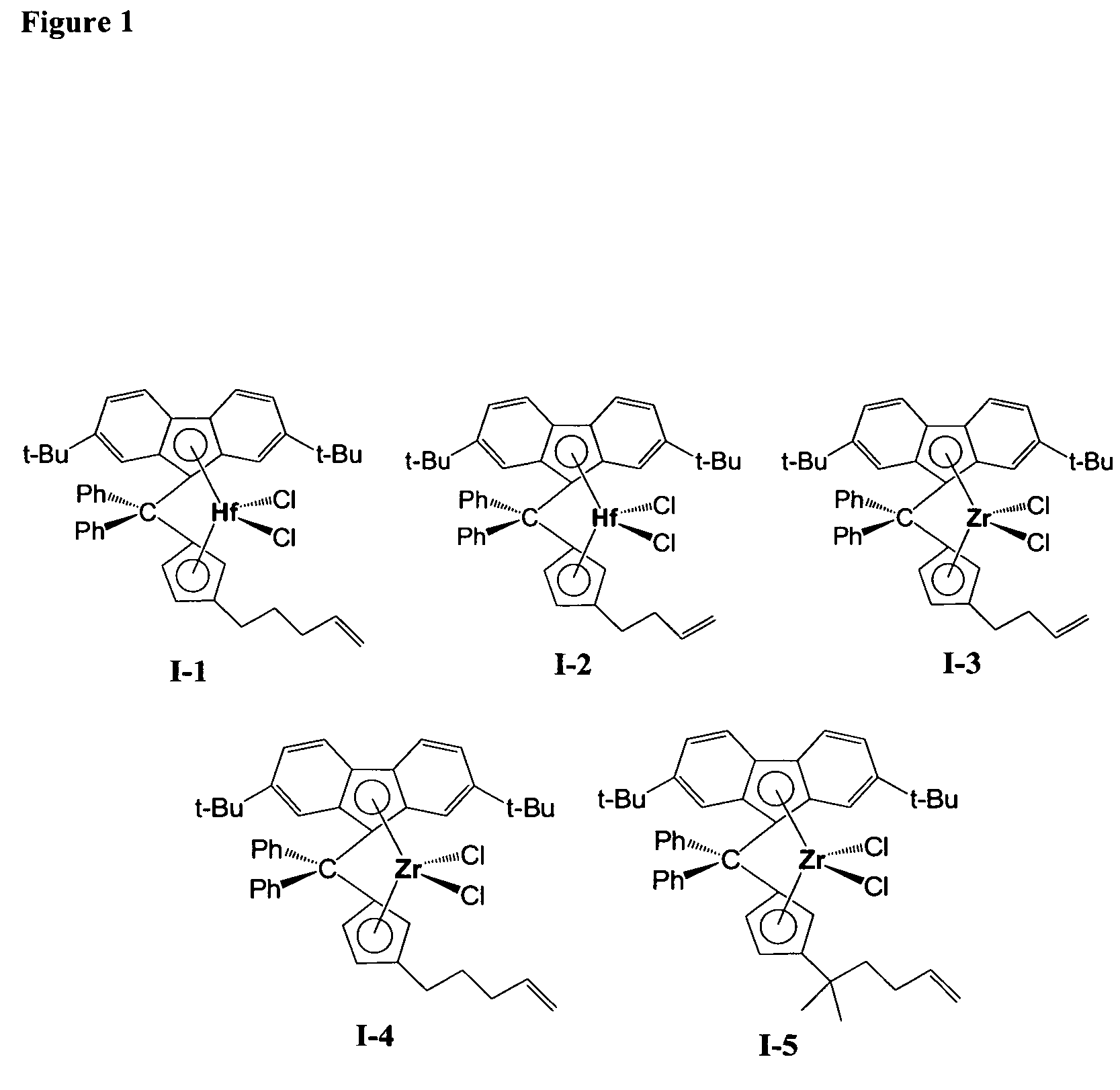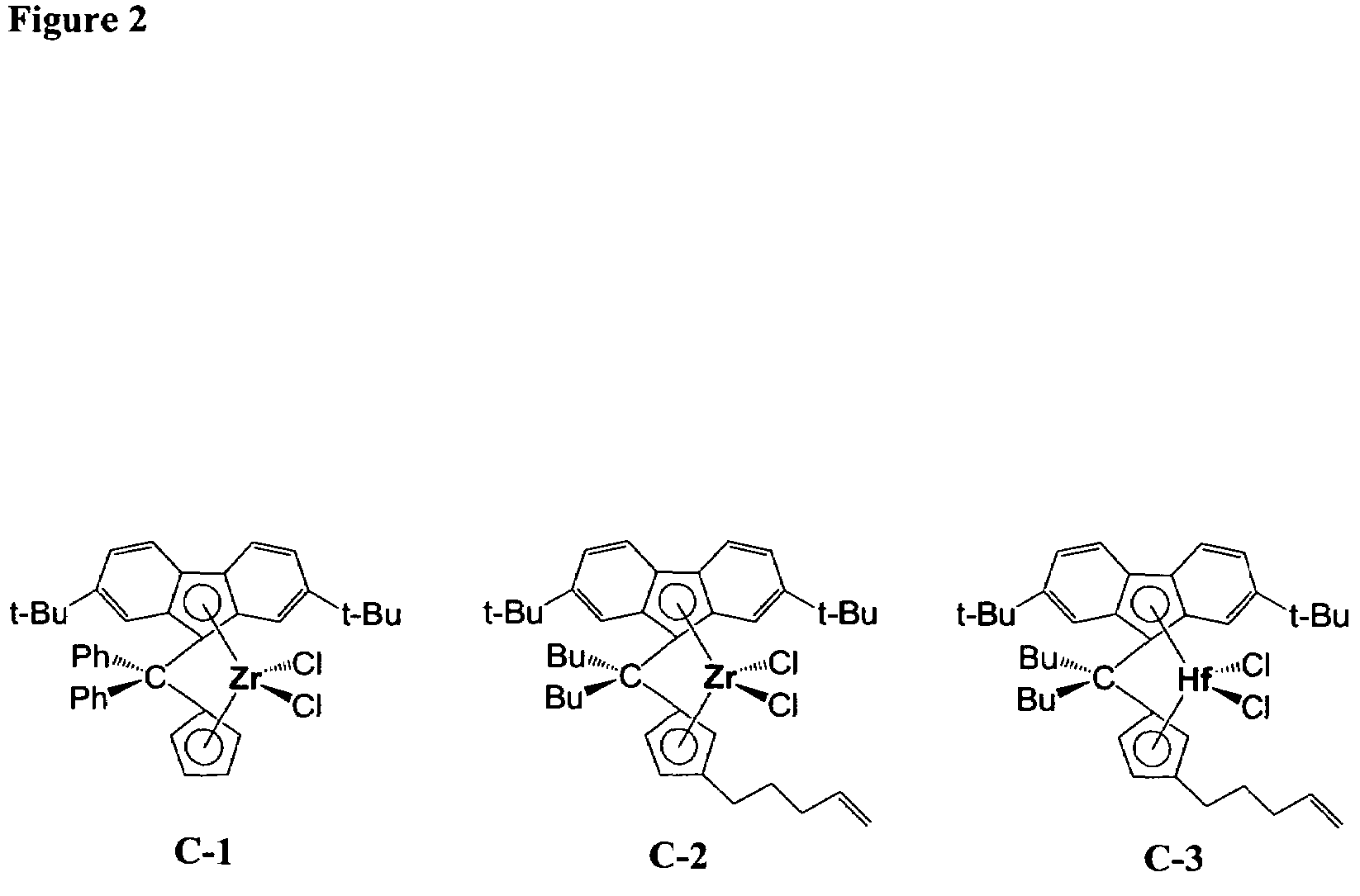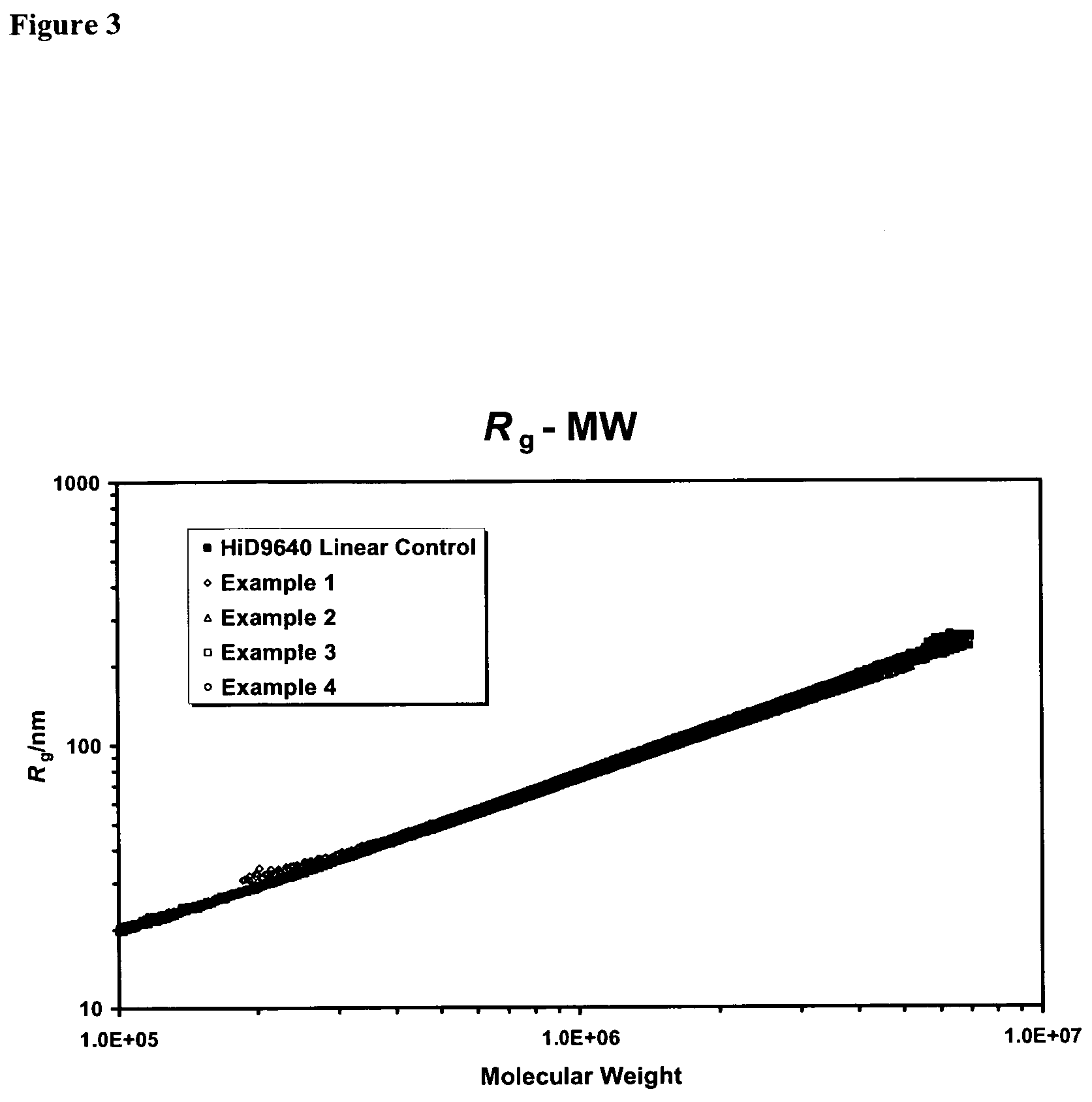Polymerization catalysts for producing high molecular weight polymers with low levels of long chain branching
a polymerization catalyst and high molecular weight technology, applied in the direction of catalyst activation/preparation, chemical/physical processes, group 8/9/10/18 element organic compounds, etc., can solve the problems of undesirable lcb presence and detrimental to film performance, and achieve the effect of improving productivity
- Summary
- Abstract
- Description
- Claims
- Application Information
AI Technical Summary
Benefits of technology
Problems solved by technology
Method used
Image
Examples
examples 1-16
Catalytic Runs Varying the Metallocene, Activator-Support, and Conditions
[0406]Examples 1-16 in Table 1 illustrate ethylene polymerization runs performed in a one-gallon (3.785 liter) stainless steel autoclave reactor at various temperatures, using two liters of isobutane diluent and an aluminum alkyl cocatalyst and scavenger. No hydrogen or comonomer was added. Metallocene solutions (2 mg / mL) were typically prepared by dissolving 30 mg of the metallocene in 15 mL of toluene. A typical polymerization procedure is as follows. The aluminum alkyl compound, treated solid oxide, and the metallocene solution were added through a charge port, typically in that order, while venting isobutane vapor. The charge port was closed and two liters of isobutane were added. The contents of the reactor were stirred and heated to the desired run temperature (Table 1). Ethylene was fed on demand to maintain the specified pressure for the specified length of the polymerization run. The reactor was mainta...
PUM
| Property | Measurement | Unit |
|---|---|---|
| temperature | aaaaa | aaaaa |
| temperature | aaaaa | aaaaa |
| temperature | aaaaa | aaaaa |
Abstract
Description
Claims
Application Information
 Login to View More
Login to View More - R&D
- Intellectual Property
- Life Sciences
- Materials
- Tech Scout
- Unparalleled Data Quality
- Higher Quality Content
- 60% Fewer Hallucinations
Browse by: Latest US Patents, China's latest patents, Technical Efficacy Thesaurus, Application Domain, Technology Topic, Popular Technical Reports.
© 2025 PatSnap. All rights reserved.Legal|Privacy policy|Modern Slavery Act Transparency Statement|Sitemap|About US| Contact US: help@patsnap.com



